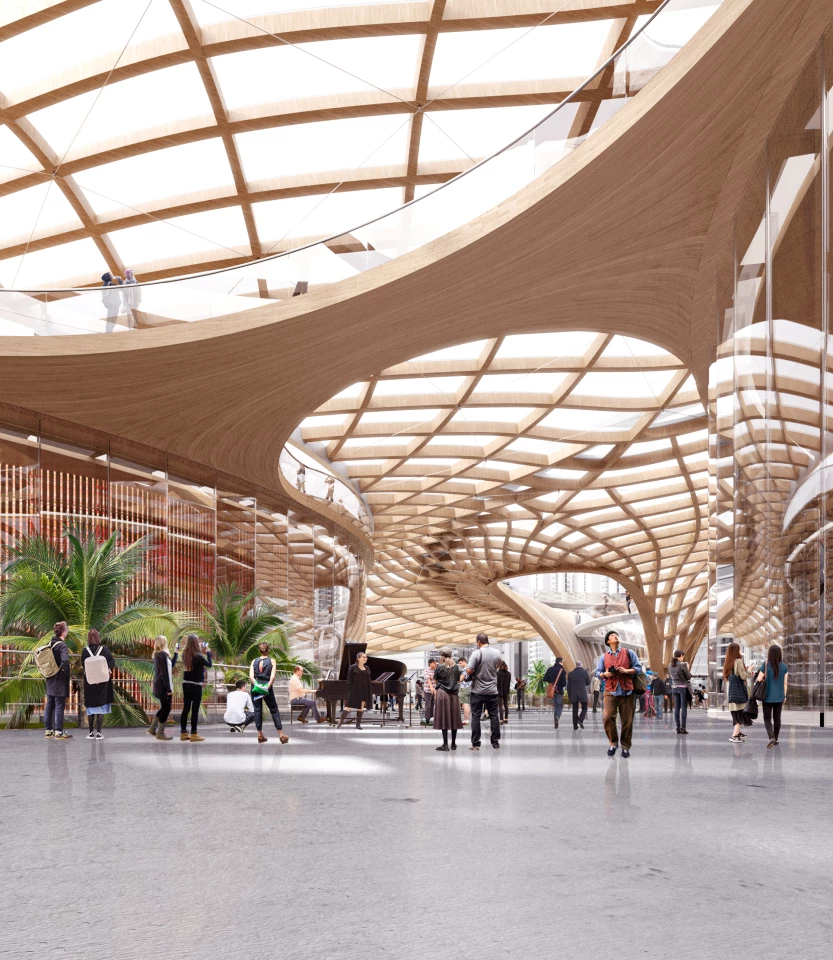MAD Architects has revealed plans for a new mixed-use development in Foshan, Guangdong province, China. The project, named Nanhai Arts Center, will feature an eye-catching design that's informed by its lakeside location and is envisioned as a large rippling wave of water.
The Nanhai Arts Center will measure 121,275 sq m (around 1.3 million sq ft), and will contain a grand theater with a 1,500 seat amphitheater and multi-purpose hall, plus a sports center. Elsewhere will be rooftop terraces and some retail and restaurant areas. The renders also depict an intricate timber structure inside.
Its undulating roofline will reach a maximum height of 57 m (187 ft) and will be made from a translucent white ETFE plastic membrane, which is the same stuff that MAD also used on its Yabuli Entrepreneurs' Congress Center. This will help unify the different buildings and create semi-outdoor areas, opening the project up to natural light and ventilation. In addition to resembling a wave, the roofline is inspired by the oversized eaves of the traditional local architecture.
"The traditional culture of Nanhai, is in the drum beat and boat drift during the dragon festival boat race and in the kung-fu in the lion dance," explained MAD founder Ma Yansong. "Watching them, you can feel the dynamic vibrant and innovative spirit from ancient times till today. We want to bring it back to modern living here. The Nanhai Art Center resembles a continuous wave of water, with three main buildings looming underneath the floating sun canopy. The semi-outdoor merges the central landscape of the lake with the programs, inviting the local communities to immerse themselves in the waterfront landscape."

The Nanhai Arts Center will reduce its grid-based power requirements by using solar panels. Additionally, a rainwater collection system will be installed and MAD will use greenery to help shade the interior.
Construction of the Nanhai Arts Center will begin this year and it's expected to be completed in 2029. The project is the latest work from MAD that draws inspiration from the natural world, with the Chinese firm previously referencing mountains, bamboo leaves and clouds.
Source: MAD








